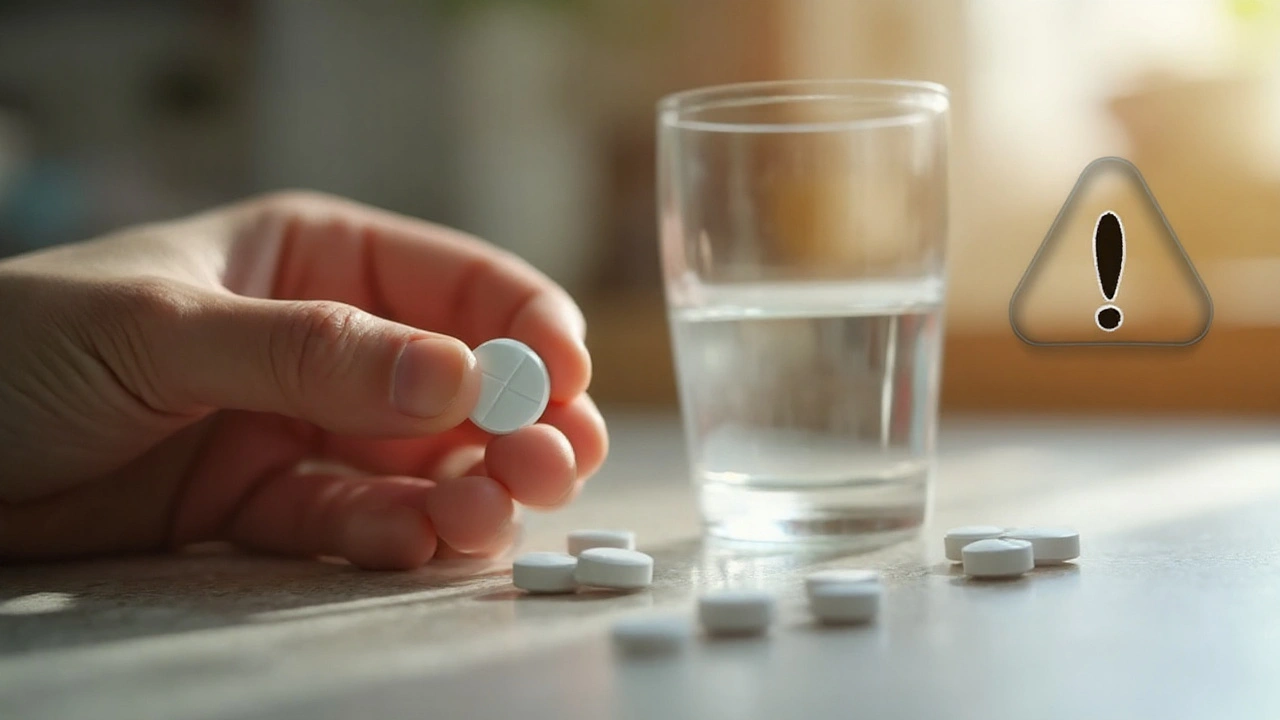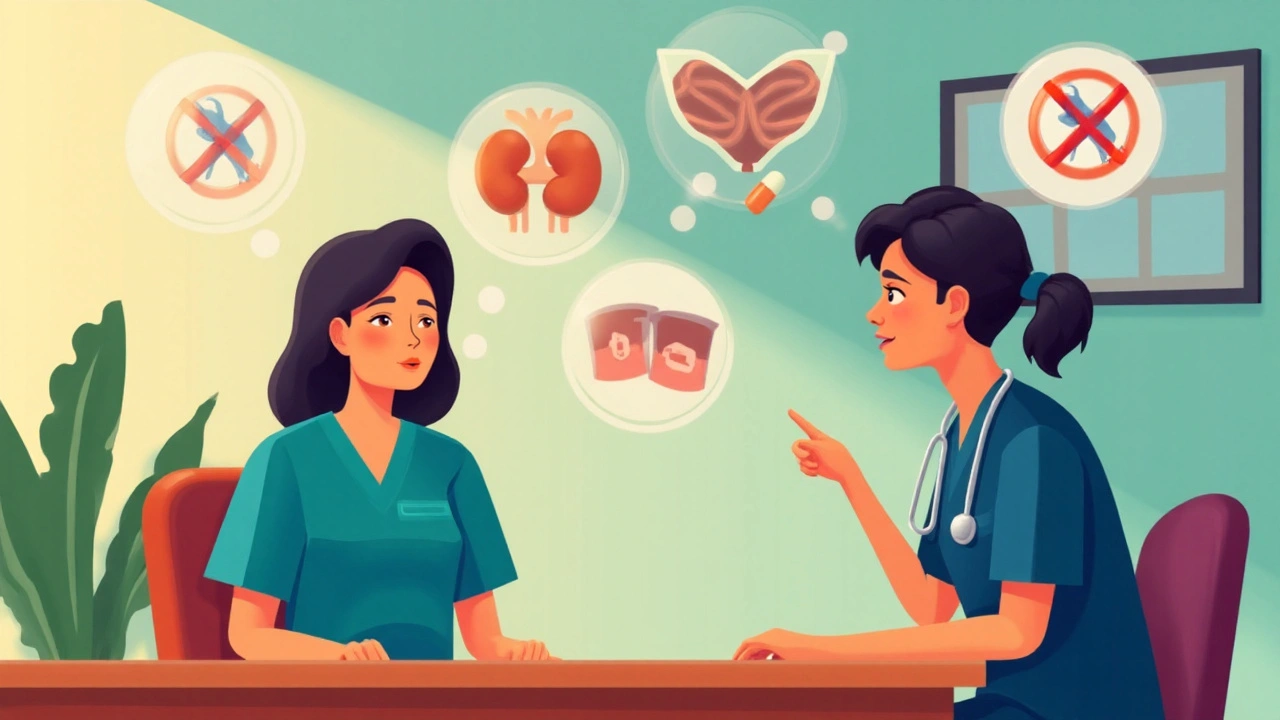TL;DR:
- Levoflox is the brand name for levofloxacin, a broad‑spectrum fluoroquinolone antibiotic.
- Typical adult dose for most infections is 500mg once daily for 7‑14days, but exact regimens vary.
- Common side effects include nausea, headache, and mild tendon aches; serious risks are tendon rupture and QT‑prolongation.
- Avoid taking with antacids, iron, or multivitamins within 2hours; many drugs (e.g., warfarin, NSAIDs) can interact.
- Do not use in pregnancy, children, or anyone with a history of tendon disorders unless absolutely necessary.
What is Levoflox? Mechanism and Approved Uses
Levoflox is the commercial name for levofloxacin, a fluoroquinolone that attacks bacterial DNA‑gyrase and topoisomeraseIV. By disabling these enzymes, the drug stops bacteria from replicating their DNA, eventually killing them. Because it hits two essential targets, levofloxacin works against a wide range of Gram‑positive and Gram‑negative bugs.
Health regulators in Canada, the U.S., and the EU have approved levofloxacin for several common infections:
- Acute bacterial sinusitis
- Community‑acquired and hospital‑acquired pneumonia
- Uncomplicated urinary tract infections (UTIs)
- Complicated skin and soft‑tissue infections
- Acute exacerbations of chronic bronchitis
Off‑label uses pop up occasionally-like certain sexually transmitted infections-but these should only be considered under specialist guidance because the safety profile is stricter than older antibiotics.
One key reason clinicians reach for levofloxacin is its once‑daily dosing. That simplicity improves adherence compared with older fluoroquinolones that require twice‑daily shots.

How to Take Levoflox: Dosage, Administration, and When to Seek Alternatives
Correct dosing hinges on three variables: the infection type, kidney function, and patient age. Below is a quick‑reference table for typical adult regimens (all doses are oral tablets unless otherwise noted):
| Condition | Standard Dose | Duration |
|---|---|---|
| Acute bacterial sinusitis | 500mg once daily | 5‑7days |
| Community‑acquired pneumonia | 750mg once daily | 7‑14days |
| Complicated UTIs | 750mg once daily | 7‑14days |
| Skin & soft‑tissue infection | 500mg once daily | 10‑14days |
If you have reduced kidney function (eGFR < 30mL/min), the dose should be cut in half or given every other day. Children and pregnant women are generally excluded from treatment because safety data are insufficient.
Practical tips for taking the pill:
- Swallow the tablet whole with a full glass of water.
- Take it on an empty stomach-ideally 1hour before or 2hours after meals. Food can lower absorption by up to 20%.
- Avoid dairy, calcium‑rich antacids, iron supplements, or multivitamins within 2hours, as they chelate the drug and make it less effective.
- If you miss a dose, take it as soon as you remember unless it’s almost time for the next one. Never double up.
- Finish the full course, even if symptoms improve early. Stopping too soon can breed resistance.
When to consider an alternative:
- History of tendon rupture, tendonitis, or connective‑tissue disorders.
- Diagnosed heart rhythm issues (especially prolonged QT interval).
- Concurrent use of strong CYP‑inducing drugs that may lower levofloxacin levels.
- Pregnancy, breastfeeding, or children under 18years.
In those cases, a macrolide, doxycycline, or a beta‑lactam may be safer, but let your prescriber decide based on culture results and local resistance patterns.

Safety First: Side Effects, Drug Interactions, and Precautions
Levoflox is generally well‑tolerated, but the fluoroquinolone class carries a few red‑flag warnings that have tightened prescription rules in recent years.
Common, usually mild side effects (affect ~10‑20% of users):
- Nausea or vomiting
- Headache
- Dizziness
- Diarrhea
- Mild skin rash
Serious, though rare, adverse events (occurring <1%):
- Tendonitis or Achilles tendon rupture-especially in patients over 60, on corticosteroids, or with a recent fluoroquinolone exposure.
- Peripheral neuropathy that may be irreversible.
- QT‑interval prolongation leading to torsades de pointes.
- Severe hypersensitivity reactions (anaphylaxis, Stevens‑Johnson syndrome).
Because tendon problems can surface weeks after finishing therapy, watch for sudden calf or heel pain, swelling, or difficulty walking. Stop the drug immediately and seek medical attention if you notice these signs.
Key drug interactions to flag with your pharmacist or doctor:
- Antacids, calcium, magnesium, iron, zinc - reduce absorption; separate by at least 2hours.
- Warfarin - may increase INR; monitor blood clotting more frequently.
- NSAIDs - combined use raises risk of tendon rupture.
- Cyclosporine, theophylline, or oral hypoglycemics - can raise serum levels of those drugs.
- Other QT‑prolonging agents (e.g., certain antiarrhythmics, some antidepressants) - additive heart rhythm risk.
Alcohol isn’t a direct interaction, but heavy drinking can worsen nausea and dizziness, making the overall experience uncomfortable.
Precautions for specific populations:
- Elderly: reduced kidney clearance; start at lower dose.
- Patients with diabetes: monitor blood sugar more closely; fluoroquinolones can cause dysglycemia.
- People with a history of seizures: levofloxacin can lower seizure threshold.
Pregnant or breastfeeding individuals should avoid levofloxacin entirely; animal studies suggest cartilage damage in developing fetuses.
Quick FAQ
- Can I take levoflox with food? You can, but absorption drops. Best on an empty stomach.
- Do I need a follow‑up lab test? Usually not, unless you have kidney issues or are on warfarin.
- What if I experience tendon pain? Stop the medication, rest the affected area, and see a doctor right away.
- Is levoflox effective against MRSA? No, it’s not reliable for methicillin‑resistant Staph aureus; choose vancomycin or linezolid instead.
- Can I drive while on levoflox? Most people feel fine, but if you get dizziness or vision changes, avoid driving.
By keeping these safety points front of mind, you can harness levofloxacin’s powerful antibacterial action while minimizing risk.
When you receive a prescription, double‑check the label, ask the pharmacist about any other meds you’re taking, and set a reminder to finish the full course. If anything feels off, call your clinic-better safe than sorry.


Avis Gilmer-McAlexander
September 21, 2025 AT 15:49But man, the warning about tendon pain? Real. Felt like a rubber band snapping in my calf at day 6. Didn't break, but scared the hell out of me. Now I stretch like my life depends on it.
ANTHONY SANCHEZ RAMOS
September 23, 2025 AT 12:43Laura Anderson
September 23, 2025 AT 20:07Fay naf
September 24, 2025 AT 07:04Also the tendon rupture stats are 10x higher in elderly diabetics. Why is this not on the label?
Matt Czyzewski
September 25, 2025 AT 14:01KALPESH GANVIR
September 25, 2025 AT 15:13April Barrow
September 26, 2025 AT 22:01alex terzarede
September 28, 2025 AT 12:32Melody Jiang
September 29, 2025 AT 11:58Dipali patel
September 29, 2025 AT 21:40lisa zebastian
September 30, 2025 AT 12:45Jo Sta
October 1, 2025 AT 03:44Jasmine L
October 2, 2025 AT 12:09Jessie Bellen
October 3, 2025 AT 06:36Lucinda Harrowell
October 5, 2025 AT 06:04Joe Rahme
October 6, 2025 AT 15:43Leia not 'your worship'
October 7, 2025 AT 19:59John Schmidt
October 8, 2025 AT 18:40Jerry Erot
October 8, 2025 AT 19:43